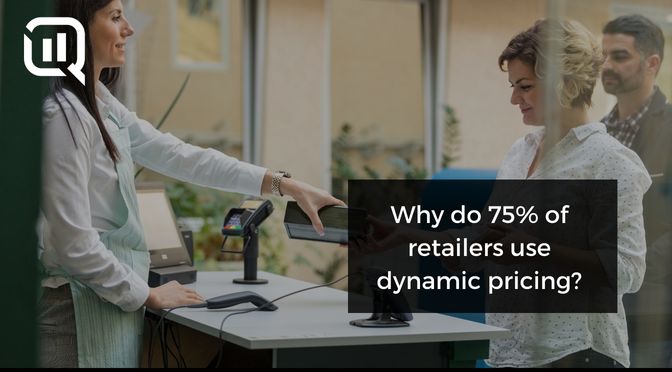At this moment in time, the product whose fluctuating price has caused great distress among consumers is eggs. The edible ping pong balls necessary for making everything from a protein-heavy breakfast to a batch of chocolate chip cookies, everyone is talking about the astronomical increase in the price of eggs. But while eggs are the most visible, they are far from the only product whose price has gone from shelf stable to dynamic pricing.
In an article the WSJ published late last year, they obtained information from my colleagues at QuickLizard, a dynamic pricing tool, that 75% of retailers use dynamic pricing compared to the previous year. . That means that the $29.99 pair of jeans which you have been eyeing at American Eagle, just waiting for an excuse to buy will most likely be a different price when that excuse comes along, due to the dynamic pricing decisions that retailers are factoring into every pricing decision.
Competitive Intelligence
The cost of goods sold is undoubtedly a major reason that retailers are updating pricing in an increasingly more frequent fashion. Inflation is an economic problem that is here to stay, at least in the short term, causing major stores to bump up pricing quickly or risk losing most if not all of their precious margin to increased prices from their vendors. One large retailer I work with shared with me that in 2022, they had to revise their cost projections 6 times due to the impact that inflation was having on their business.
The cost, however, is not the only big driver of price updates – the prevalence of competitive intelligence in the modern pricing world has given buyers and category managers the tools and information they need to update prices in response to competitor shifts.
Price Monitoring
With the power of e-commerce price monitoring tools, pricing managers can tweak retail prices in response to dire competitive events, such as in response to an Amazon flash sale, then readjust prices back to a stable level once the threat of a major undercut has passed. Since most retailers advertise their upcoming large sales, pricing analysts at their competitors have the opportunity to assess what their own price position should be in advance of that sale.
It should come as no surprise that the world’s largest e-commerce retailer, Amazon, has mastered the art of dynamic price updates. Accounting for 38% of the e-commerce market in 2022, Amazon has built automated price change rules powering its marketplace based on the competitive data that it collects. Business Insider has reported that Amazon changes prices on products every 10 minutes – a practice that many of Amazon’s competitors are keen to emulate.
White Labelled Products
Having been provided with pricing intelligence about their major competitors, we are seeing more and more stores follow a strategic pricing strategy, especially around privately labelled products, that enables higher margins and more consistent sales. I encourage reference to another QL2 blog post, which details the margin, marketing, and brand equity advantages associated with the practice of white labeling. Over the last year, I have seen customers shift from being concerned equally about their whole catalog of products being priced competitively to a dogged focus on ensuring that matches have been made to their private products to ensure that they are priced competitively. Since there is no 1:1 UPC match on these products, the expertise and competency of each pricing intelligence solution is the sole driving force to ensure that the provided competitive data is accurate and actionable.
Ten years ago, price updates often accompanied line reviews that involved laborious in-store audits and deliberation. Now, an online price and in-store price are able to be adjusted asynchronously, putting substantial power in the hands of e-commerce pricing teams. It also means that retail pricing teams are growing larger to accommodate the massive real-time data that competitive intelligence providers are bringing to the table. In order to meet the price change cadence that their competitors like Amazon are implementing, retail demand for competitive intelligence is higher than ever before.
Check out our webinars on:
- How to Evaluate Your Competitive Position Using QL2’S Automated Pricing Insight Platform here>>
- Win The ECommerce Price War with Advance Analytics – Click here to watch now
